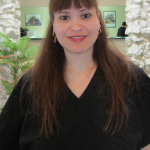

Types of injuries:
- Acute or Chronic tear
Acute – heavy lifting or a fall (usually younger people)
Chronic – Sports injuries, or excessive overhead movements (usually over 40)
- Bursitis
The fluid-filled sac (bursa) between your shoulder joint and rotator cuff tendons can become irritated and inflamed
- Tendonitis
Inflammation usually caused by Degeneration (wearing out) of muscles due to age or Repetitive action to the muscle
- Impingement
Pinching of tendon caused by bone spur under acromion
Rotator cuff injury symptoms may include:
- Pain and tenderness in your shoulder, especially when reaching overhead, reaching behind your back, lifting, pulling or sleeping on the affected side
- Shoulder weakness
- Loss of shoulder range of motion
- Inclination to keep your shoulder inactive
Common causes of rotator cuff injuries include:
- Normal wear and tear. Increasingly after age 40, normal wear and tear on your rotator cuff can cause a breakdown of fibrous protein (collagen) in the cuff’s tendons and muscles. This makes them more prone to degeneration and injury. With age, you may also develop calcium deposits within the cuff or arthritic bone spurs that can pinch or irritate your rotator cuff.
- Poor posture. When you slouch your neck and shoulders forward, the space where the rotator cuff muscles reside can become smaller. This can allow a muscle or tendon to become pinched under your shoulder bones (including your collarbone), especially during overhead activities, such as throwing.
- Falling. Using your arm to break a fall or falling on your arm can bruise or tear a rotator cuff tendon or muscle.
- Lifting or pulling. Lifting an object that’s too heavy or doing so improperly — especially overhead — can strain or tear your tendons or muscles. Likewise, pulling something, such as a high-poundage archery bow, may cause an injury.
- Repetitive stress. Repetitive overhead movement of your arms can stress your rotator cuff muscles and tendons, causing inflammation and eventually tearing. This occurs often in athletes, especially baseball pitchers, swimmers and tennis players. It’s also common among people in the building trades, such as painters and carpenters.
How are rotator cuff injuries treated?
Most of the time treatment for rotator cuff injuries involves manual therapy, exercise and rehabilitation. Your doctor or a physical therapist will talk with you about specific exercises designed to help heal your injury, improve the flexibility of your rotator cuff and shoulder muscles, and provide balanced shoulder muscle strength. Depending on the severity of your injury, physical therapy may take from three weeks to several months. The treatment of rotator cuff injuries depends on the severity of the injury to the tendons of the rotator cuff and the underlying condition of the patient. Mild rotator cuff injuries are treated with ice, rest, and anti-inflammatory medications (such as ibuprofen). Generally, gradual rehabilitation is instituted. Exercises are used that are specifically designed for rotator cuff strengthening. Patients with persistent pain and motion limitation can often benefit by a cortisone injection in the rotator cuff. Sometimes, repeat injections are necessary. More severe rotator cuff injuries can require surgical repair.
What is the outlook (prognosis) for rotator cuff disease?
Without treatment, including exercise, the shoulder frequently permanently loses full function from rotator cuff injuries. Sometimes, scarring around the shoulder (adhesive capsulitis) leads to a marked restriction of the range of shoulder motion. This condition is referred to as a frozen shoulder. Weeks of rehabilitation is the norm with significant rotator cuff injuries. Some patients never recover full function of the shoulder joint.
How important is rehabilitation in the treatment of a rotator cuff tear?
Rehabilitation plays a critical role in both the nonsurgical and surgical treatment of a rotator cuff tear.
When a tear occurs, there is frequently atrophy of the muscles around the arm and loss of motion of the shoulder. An exercise or physical therapy program is necessary to regain strength and improve function in the shoulder.
Even though surgery repairs the defect in the tendon, the muscles around the arm remain weak, and a strong effort at rehabilitation is necessary for the procedure to succeed. Complete rehabilitation after surgery may take several months.
References:
www.orthoinfo.aaos.org

